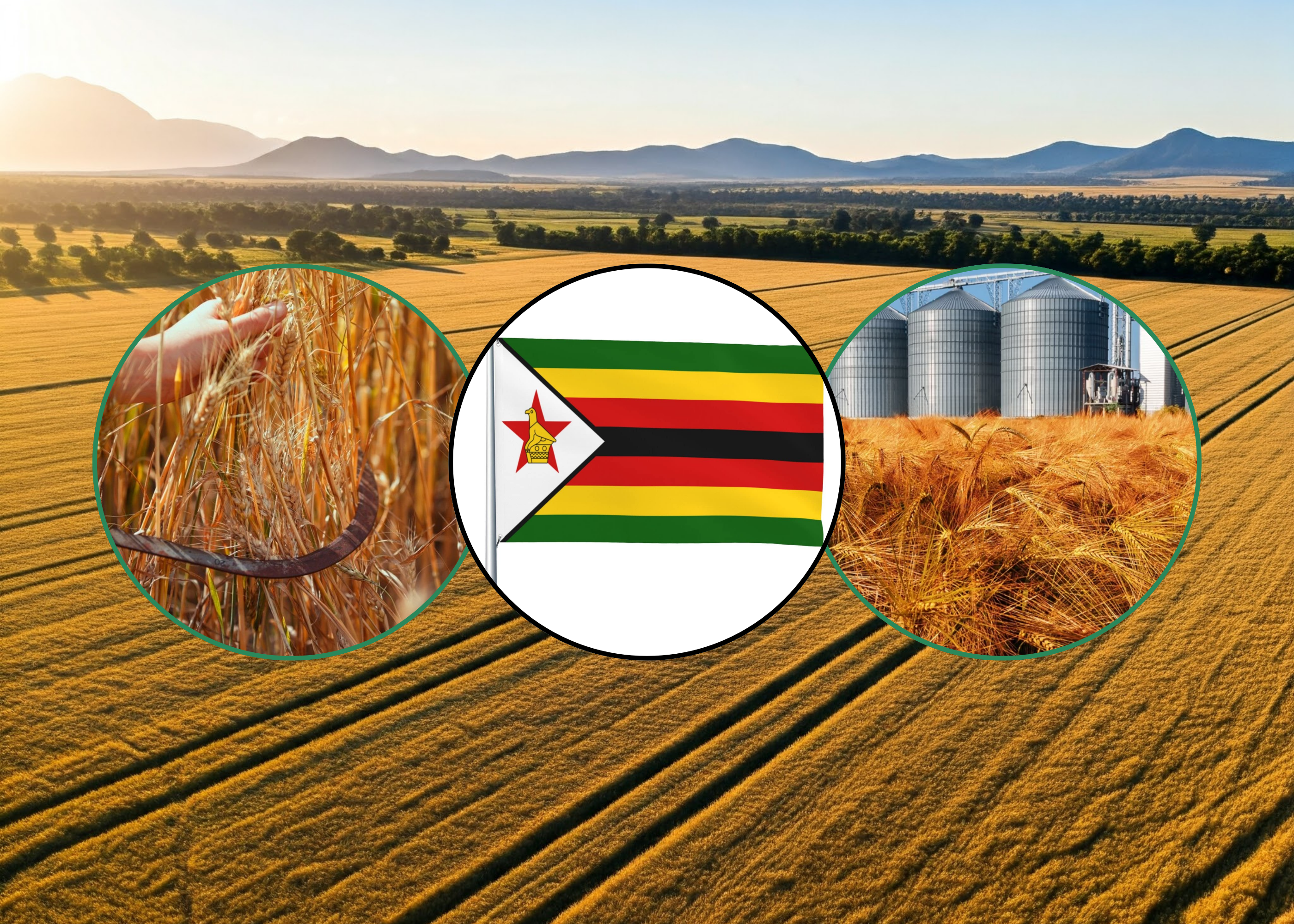News in Brief:
– Zimbabwe’s 2024 wheat harvest has reached 92% of its 600,000 MT target, despite climate challenges.
– The government reiterates its commitment to agricultural innovation and food security, exploring summer wheat cultivation and partnering with TAAT to improve wheat quality and yield.
Zimbabwe’s 2024 wheat harvest has reached a significant milestone, with 555,824 metric tonnes (MT) already collected. The figure brings the country closer to its ambitious target of 600,000 tonnes, despite facing climate-related challenges.
Reportedly, farmers cultivated 121,900 hectares of wheat this year. A significant portion of the harvest, 46%, has been delivered to Grain Marketing Board (GMB) depots.
Meanwhile, 3% was sold through the Zimbabwe Mercantile Exchange (ZMX), and the remaining 51% was distributed to private buyers like National Foods, Victoria Foods, and Blue Ribbon.
Progress and challenges
While current wheat deliveries stand at 186,682 MT, according to official sources, slightly lower than the previous year’s figure of 199,459 MT, the overall harvest demonstrates the country’s steady progress towards self-sufficiency in wheat production.
Climate change and an El Niño-induced drought have posed significant challenges to the agricultural sector. However, the government has implemented measures to mitigate these impacts and ensure food security, for example, by embracing the Africa Risk Capacity Sovereign Drought Insurance as an ex-ante risk financing tool among others.
Meantime, Leonard Munamati, Acting Chief Director of Agricultural and Rural Development Advisory Services (ARDAS), acknowledged minor delays in harvesting due to early rains but expressed optimism about achieving the season’s yield target.
“Surveys are underway on the remaining harvest, but we are hopeful of producing positive results this season,” he said.
Exploring summer wheat cultivation
Furthermore, in a bid to bolster wheat production, the government is exploring the potential of summer wheat cropping. This innovative approach aims to diversify the farming cycle and reduce reliance on winter wheat.
Permanent Secretary for Lands, Agriculture, Fisheries, Water and Rural Development, Professor Obert Jiri, highlighted the need to identify wheat varieties suitable for warmer conditions.
The country’s leadership partnered with the Technologies for African Agricultural Transformation (TAAT) program, funded by the African Development Bank (AfDB), to enhance agricultural productivity and develop high-quality wheat varieties.
“We still rely on imported high-quality wheat to blend with our locally produced wheat. The TAAT program will help align our flour production with our climate while pushing yields higher,” Jiri said.
Effectively, Zimbabwe has solidified its position as a leading wheat producer on the African continent, highlighting the government’s commitment to agricultural innovation and food security.
As harvest continues, the country’s agricultural sector remains resilient, leveraging research, partnerships, and adaptive farming strategies to meet the nation’s growing demand for wheat.



